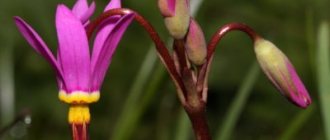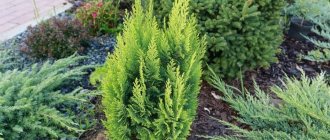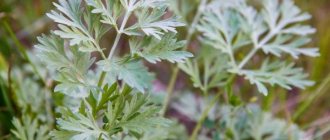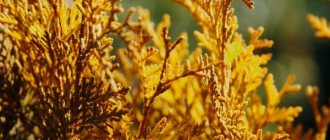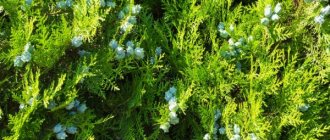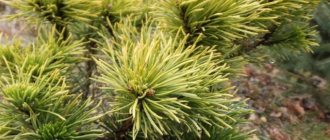Description of cineraria
In Latin, the name of the flower means ashy. It is a herbaceous perennial that has the shape of a decorative subshrub. It does not tolerate frost well, so in Russia it is planted as an annual or biennial.
Reaches 30-90 cm, has branched shoots. Most varieties have pinnately dissected leaves. The plates are round, pubescent, wide.
Reed tube-shaped flowers form shield-shaped inflorescences. Petals of various colors: crimson, white, canary, pudding. Flowering is long: from the first summer month until frost.
Types and varieties of cineraria
The genus Cineraria includes 50 species. However, not everything is grown in an artificial environment. Cultivated species are usually divided into 2 groups:
- decorative deciduous - planted in open ground;
- decorative flowering - intended for home keeping.
Silver (seaside)
Grown in gardens. The basal leaves are greenish-silver, collected in a rosette. Seaside cineraria is popular in landscape design. This variety is also called silver dust.
The most popular varieties:
| Name | Height (cm) | Leaves |
| Silver Dust | 15-20 | Decorative, lace. |
| Cirrus | 20 | Serrated, oval. |
Bloody (hybrid)
This is the only variety grown indoors. However, in the botany literature it is classified as a member of the Cross family.
Up to 30 cm, sometimes more. The foliage is large, oval, reaching 10-20 cm. A strong contrast with the greenery is created by variegated flowers, similar to gerberas or daisies. Popular varieties of hybrid cineraria:
| Name | Height (cm) | Flowers (circumference in cm) |
| Grandiflora | 50-70 | 5-8 |
| Double | 35-70 | 5 |
| Stellata | 70-90 | 2-4 |
| Sympathy | 20-60 | 4 |
Graceful
The stems are branching, up to 60 cm. The shoots and plates are pubescent with sticky fibers. The buds form baskets. The most beautiful varieties:
| Name | Height (cm) | Flowers |
| Nanus | 25 | Various tones |
| Ligulosus | Up to 60 | Terry, various shades |
When to plant open ground
Cineraria seedlings are transplanted into open ground from May 15, when the risk of return frosts has passed and the soil has warmed up well. 14 days before the procedure, the seedlings begin to harden.
Every day the seedlings are taken out onto the balcony or street without drafts and wind, and also protected from sunlight. Gradually, the stay time is increased to a day.
Growing cineraria from seeds at home through seedlings cannot be called a complicated process. Compact silver shrubs, grown independently, will decorate any area.
Watch the video! Cineraria: cultivation and care
Growing Cineraria
Planting can be done directly outside or into seedlings. The second method is preferable; in this case, flowering will last longer.
Growing cineraria through seedlings
Typically, seeds for propagation are purchased at a flower shop. They have good germination. Self-collection of seed material is rare, because the plant is rarely found in Russian gardens.
Sowing is carried out in the first half of April:
- Pour peat and sand (1:1) into the container.
- Distribute the seeds without burying them in the ground.
- Use a wooden ruler to compact the soil.
- Moisten the seedlings using a spray bottle with a fine nozzle or through bottom watering.
- Cover with glass or plastic film to create greenhouse conditions. Remove the cover every day to ventilate, water and remove evaporation from the walls.
- The first shoots will appear after 7-10 days. After this, move the containers to the brightest room.
- After the formation of 2 true leaves, dig the sprouts with a lump of earth into separate cups, preferably into peat-humus briquettes.
Planting, care
Planting and caring for the silver cineraria bush will not cause any difficulties. The main method of cultivation is sowing seeds. The cutting method is less commonly used, and there will be no difficulties with it either.
Important! Cineraria seeds can be bought at any store; they have a high germination rate, which means you can definitely place this silvery beauty in your flowerbed.
Seeds need to be sown between March and until May; they can be grown through seedlings or sowed directly into the ground. There are several methods for obtaining the desired shoots:
- Sowing seeds in moist soil. The seeds themselves are covered with earth and covered with film on top. So the temperature inside will be slightly higher than indoors, and seedlings will quickly appear.
- Sowing in moist soil with a layer of sand. There is also film or glass on top.
- Sowing in moist soil and covering it with a sheet of paper, which must be well moistened. Seeds will grow through it without problems.
For a neat appearance, the plant must be trimmed regularly.
To ensure rapid germination, the container is covered with film or glass. From time to time the soil needs to be moistened, preferably with a spray bottle. It is not recommended to water with a stream of water, as the seeds may be washed away, and then the seedlings may not be waiting.
After 7-10 days, seedlings will appear; they need to be watered very carefully, or better yet, sprayed with a spray bottle. When you notice the first silvery leaves, you need to remove the film and move the plant closer to a sunny window.
Picking is carried out as soon as 2 true leaves appear. There will be no difficulties with transplantation - cineraria takes root well in a new place. Planting in open ground is carried out a couple of months after picking; in this case, it also does not need special care.
Sowing in open ground
You can sow cineraria directly in the flowerbed, but in this case flowering is delayed by 1-1.5 months. In the case of silver cineraria, this is not critical; the flowers do not have a key decorative value.
Sowing in open ground
Watering and sun
Cineraria is absolutely not demanding on watering; it will survive even a dry summer. The main watering is carried out after planting young seedlings, and as soon as the plant takes root, it is carried out as necessary.
Important! It is worth remembering that lack of watering will cause the leaves to turn yellow and fall off.
As for the sun, the flower loves the sun's rays, and even direct UV influence will not prevent it from growing and developing.
Conditions necessary for cineraria
The following content rules must be observed:
| Factor | Conditions |
| Location | Choose the lightest one. Shade during midday heat. They can cause burns to greenery. This will cause brown spots. |
| Temperature | Optimal - +15...+18 °C. At +20 °C and above, the greens will wither. At night, the plant tolerates temperatures down to +5 °C. If cineraria grows at home, then from April to October keep it on a loggia, terrace, or in a constantly ventilated room. |
| Priming | When planting in the garden, first dig up the soil, adding peat, compost and sand. Indoor specimens should be planted in medium-sized containers filled with peat and deciduous soil, and compost. For both types of cultivation, it is recommended to add pieces of coniferous bark and wood ash to the substrate to prevent infections. |
| Humidity | High, but you can’t spray the bush because of the lint. You can place a basin with moistened moss in the room. Outside, water the soil generously without flooding the rhizome. |
| Watering | Abundant, but avoid stagnation of liquid. After moistening, loosen the soil, breaking up the hard crust. |
| Feeding | Regular, especially when the flower is planted on a poor substrate. Add mineral mixtures a couple of times a month. In spring - nitrogen-containing fertilizers to build up beautiful green mass. In summer - phosphorus compounds for better flowering. Change minerals to organic matter (mullein) several times a season. Feed indoor specimens once every 7 days. |
| Trimming | After wilting, trim off the inflorescences. Shorten branches growing in the wrong direction. |
Rules for caring for and growing in the garden
Caring for cineraria is simple; even a novice gardener can cope with growing this flower. The key condition for the comfortable development of the plant is maintaining an optimal level of humidity, as well as regular fertilizing.
Watering
The greatest difficulty in caring for cineraria in open ground is watering. The plant is moisture-loving, but when water stagnates in the soil, root rot forms. When grown in hot climates and extremely dry soil, watering is carried out at the root 1-2 times a week. In rainy summers, the watering regime should be reduced, since natural precipitation is sufficient for the health of the plant. Immediately after the procedure, it is recommended to loosen the soil a little and break the crust on its surface if it has already formed.
If the plant has slowed down or wilting parts have appeared, you need to additionally water the soil 1.5-2 meters from planting.
Top dressing
The plant responds well to fertilization. Throughout the season, different feedings are required. Throughout the summer, twice a month, a complex composition for flowering plants is applied under the bush; the procedure can be carried out during the next watering.
In the spring, cineraria is fertilized with nitrogen fertilizer to enhance the growth of green parts. During the process of setting buds, it is recommended to apply phosphorus fertilizing, which will enhance the quality and volume of flowering. When growing a flower on poor soil, fertilize with organic matter, for example, an aqueous solution of mullein, twice a season.
Loosening, mulching
Cineraria prefers well-aerated soils, so after watering it is recommended to carry out shallow loosening. Do not allow the formation of a crust on the top layer of the substrate, which leads to slower growth and disease. At the same time, it is advisable to remove all weeds near the planting.
Mulching should only be carried out if the temperature at night is likely to drop below 5°C. If weeds are removed regularly and the ambient temperature is optimal, mulch should not be laid.
Pinching, pinching, pruning
Cineraria is a compact plant that rarely grows in volume. When growing, only sanitary pruning is carried out. For this purpose, all deformed and weak leaves and shoots are removed. It is advisable to shorten elongated bushes as they grow to maintain the height of the plant. To extend the flowering period, it is recommended to remove all faded flowers down to the first leaf.
In case of disease, it is advisable to prune the entire bush almost to the very root, which allows you to preserve the root system and achieve flowering for the next season. This procedure is only suitable for growing perennials.
Transfer
If the cineraria has reduced its rate of growth and development, looks painful, and flowering is not observed, it is advisable to transplant it to a new place. Transplantation is carried out in the spring, since the bush is dug up for the winter and kept at home. The procedure is necessary only when growing perennial cineraria in one place for more than 3 years.
Planting and caring for cineraria in open ground
Planting in the garden is carried out in the second ten days of May, when the likelihood of the return of cold weather disappears. Step by step process:
- Choose a drained area with nutritious, alkaline soil or neutral acidity.
- Dig planting holes, leaving a distance of 20-25 cm.
- Move the bushes with the earthen ball into the holes.
- Compact the soil and water it.
- To prevent freezing in the evening, insulate plants with covering material made of polypropylene fiber. Take it off in the morning.
It is important to follow the watering rules. If there is not enough liquid, the bush weakens and withers, and if there is too much moisture, root rot occurs and the flower will die as a result. The plant is drought tolerant, so rainwater is usually sufficient for it.
After watering, it is necessary to loosen the tree trunk circle. Destroy weeds in the process.
Vegetative propagation of cineraria
Decorative deciduous varieties are also propagated by cuttings. The shoots are planted in cuttings. This is a portable box that can be moved to another location to protect the bushes from ultraviolet rays. It is made from wooden beams and plywood sheets. Drainage holes must be made on the bottom.
Planting is done in the fall:
- Separate the cuttings.
- Pour 10 cm thick garden soil into a special container.
- Lay out a layer of sand (5-7 cm).
- Level the surface and moisten it with a pinkish solution of potassium permanganate (for disinfection).
- Place the cuttings in a growth accelerator (for example, Kornevin) for a couple of hours.
- Plant the shoots and compact the soil around the trunk.
- Cover with a bottle (cut off the neck), lightly sticking it into the ground. Water from above 2 times a day.
- After rooting, begin to accustom the young bushes to the environment. Remove the cover daily for 1-2 hours, gradually increasing the time.
- After a week, remove the bottle completely. Better in cloudy weather or rain.
- Move to a cool room for the winter.
- In spring, plant outside.
Preparing for landing
Most gardeners prefer the seedling method of planting cineraria. The seeds have good germination, but this method allows you to speed up the flowering process even in the most unfavorable climatic conditions. Planting cineraria seeds directly into open ground is possible only in warm regions, where stable warm weather has established since the end of April and there is no threat of frost.
Before planting, seeds should be soaked for 1-2 hours in a napkin moistened with water. The substrate for containers must be disinfected; for this it can be treated with a 1% solution of potassium permanganate or calcined in the oven.
Diseases and pests
Cineraria is resistant to various diseases and insect damage. However, if there are errors in the content, the following problems may occur:
| Disease/pest | Signs | Control measures |
| Powdery mildew |
|
|
| Rust |
|
|
| Aphid |
|
|
| Spider mite |
|
|
Possible problems in growing
Planting and caring for Cineraria silver requires the right approach, otherwise the appearance of diseases and harmful invasions cannot be avoided. Among the pests dangerous to cineraria are aphids, spider mites, and whiteflies. To get rid of it, it is enough to treat the bushes of the plant with insecticides.
The plant has strong immunity and the ability to quickly counteract all diseases. Due to a lack or excess of moisture, various types of rot, powdery mildew, and rust may appear. Having detected symptoms, you need to treat the crop with a fungicide and adjust watering.
Pests on cineraria bushes
Silver cineraria is a frequent guest in flower beds, home gardens and garden plots, but it is assigned only a minor role as an extra. It is unlikely that any other flower will be able to boast such attractive foliage and captivate a passerby even without flowering. In addition, cineraria is not demanding in terms of care and can decorate any flower arrangement, adding charm and sophistication.
Mr. Summer resident recommends: what to do with cineraria in winter
In central Russia, the flower is grown as an annual, because it cannot withstand frost outside. In late autumn, all shoots are destroyed and the area is dug up.
Some gardeners save bushes for next year. They are moved into pots and transferred to a lighted, cool room (+10...+15 °C). In such an environment they will bloom. In spring, the plants are replanted in the garden.
In the south of Russia, the flower can winter outside. To prevent freezing, it must be covered with 10-15 cm of dead wood or spruce branches. When the snow melts and the ground warms up (late April-early May), remove the cover.
Cineraria is a hardy ornamental flower that does not require special skills or knowledge for cultivation. Even beginners in floriculture can take care of it. When all conditions for development are created, he rarely gets sick and pleases with his beauty all season long.
Timing for planting silver cineraria seedlings
It is best to plant the crop in March and April. However, depending on the region, the sowing time will also vary:
- In the middle zone (Moscow region) – March 15-30.
- In Siberia and the Leningrad region, as well as in the Urals - in early - mid-April.
- In the southern regions - in early March.
You can also refer to the lunar calendar. In 2021, it is recommended to sow cineraria:
- March - 12-17, 19, 20.
- April - 6-8, 11-13, 15-17.
Unfavorable days for planting:
- March - 6, 7, 21.
- April—5, 19.
